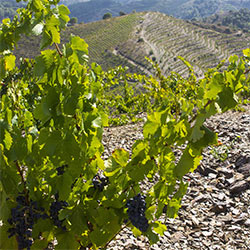 As one of only two wine regions in Spain to gain the very exclusive “Qualified” adjective in its official name, it’s no wonder that their wines are known the world over.
As one of only two wine regions in Spain to gain the very exclusive “Qualified” adjective in its official name, it’s no wonder that their wines are known the world over.
Winemaking can be traced back 800 years or more when Carthusian monks from France decided to set up shop in the area. In the centuries the followed, people eked out a living on the steep hills and rocky slopes. Then, a revolution of modern winemaking started 40 years ago that brought Priorat out in to the international spotlight. Of course, it came with a reputation of full-bodied, expensive wines.
The 2008 global financial collapse hit Priorat exceptionally hard given that they, like other Spanish regions, exported the vast majority of their bottles outside of the country. As if this wasn’t enough, there was also a slowly changing taste preference in wine drinkers for more food-friendly wines with less oak and concentration, which had been a key characteristic of the wines for years.
The more than 100 cellars did what their grapevines do in an adverse environment, they dug in. They went back to what it is that has made the Priorat wines great: the terrain, locale, and countless old vines dotting those steep hills and terraces. Born of this thinking is a new focus on showing one grape varietal and letting it speak from the bottle with the most minimal of intervention. As one winemaker in Priorat likes to say, “the enologists should be the vines”.
There are few places where it’s possible to see vines literally growing out of rocks on slopes so steep that you can barely walk on them. The villages are quiet and tranquil, completely free of the development that happened on the coast just 30 minutes south or east.
Please peruse more articles about the wines of Priorat.
This is a small excerpt from the Vinologue Priorat guidebook that covers this wine region of the Priorat county.